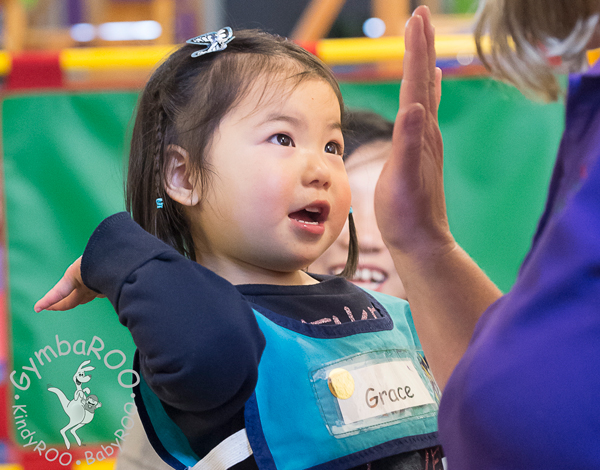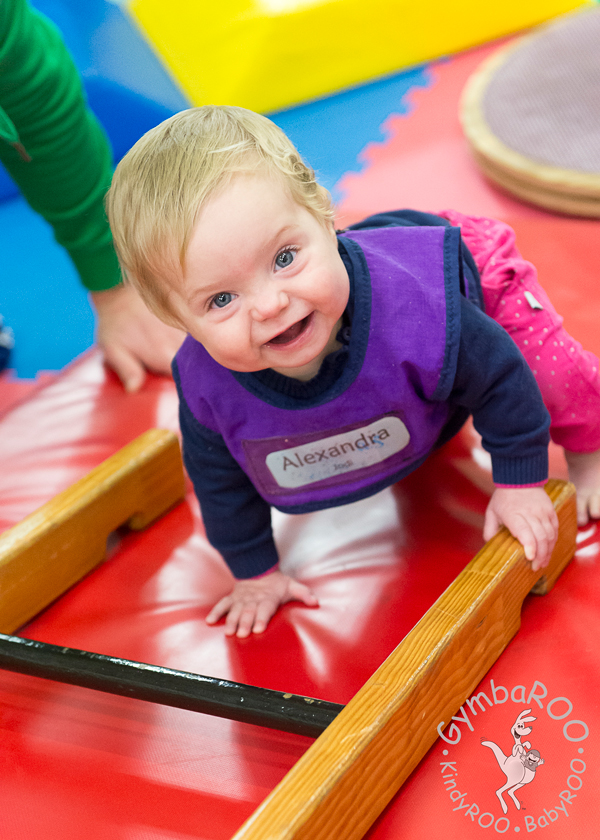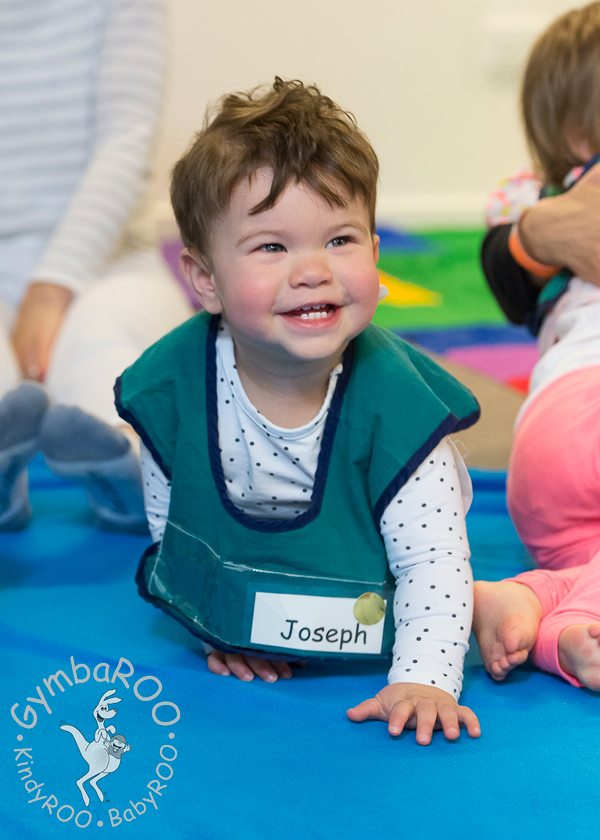Join the thousands of parents already raising smarter, happier babies with our online baby classes: The Active Babies Smart Kids series. Click here.
GymbaROO-KindyROO kids are excelling academically, emotionally, in leadership roles and on the sporting field. Find us at: GymbaROO-KindyROO
Dr Jane Williams and Bindy Cummings
Those involved in physical fitness and health know the mantra for building strength, cardio-respiratory capacity and improve physical health – exercise regularly, over a period of time and with a degree of intensity. But do you know that this mantra applies just as equally to healthy brain development in children? To learn well, babies and children need lots of opportunities to repeat new experiences. It’s only through repeated experiences that the brain grows and connects efficient and effective message pathways that optimise brain development and provide the foundations for more complex levels of learning such as reading, writing and mathematics.
Babies and children are born with the innate drive to learn. They are inquisitive at every age and stage of development with the desire to learn about themselves and to know exactly what is happening in the world around them. However, learning a new skill is not easy. It takes time, plenty of practice and enthusiastic encouragement and patience from mum, dad or a significant carer.
How the brain is structured and how well it functions is determined by the frequency, duration and intensity of an activity1. The neural pathways in the brain ‘wire and fire’ in response to activation. Activation occurs when a baby or child experiences stimulation to all or some of their sensory systems, (seeing, hearing, smelling, tasting, touching, movement of muscles and joints and sense of balance), and messages in the form of electrical signals are sent along the nerve fibres from the body to the brain. The brain then sends electrical messages back along the outgoing nerve pathways to the body, telling the body how to respond. The more practice the nervous system has at receiving and sending messages, the more efficiently it operates and the more effective a child becomes at the skill being learned.
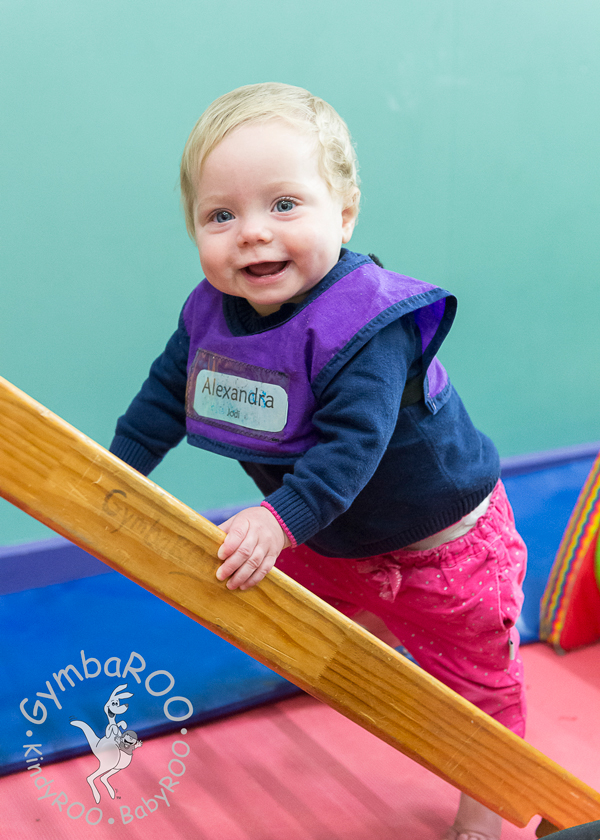 Practice not only improves performance over time it also reduces the amount of mental energy required to carry out a task2. To learn a new task takes a huge amount of mental effort. You can almost ‘see’ the brain of baby learning as he makes his first few deliberate efforts to reach for a toy, or that of a toddler as she learns to jump with two feet off the ground. After practicing over a number of days and months, these once ‘hard to do’ activities become easy. The baby reaches out for everything and the toddler jumps constantly! The movements become automatic and no mental effort is required for the actions to occur.
Practice not only improves performance over time it also reduces the amount of mental energy required to carry out a task2. To learn a new task takes a huge amount of mental effort. You can almost ‘see’ the brain of baby learning as he makes his first few deliberate efforts to reach for a toy, or that of a toddler as she learns to jump with two feet off the ground. After practicing over a number of days and months, these once ‘hard to do’ activities become easy. The baby reaches out for everything and the toddler jumps constantly! The movements become automatic and no mental effort is required for the actions to occur.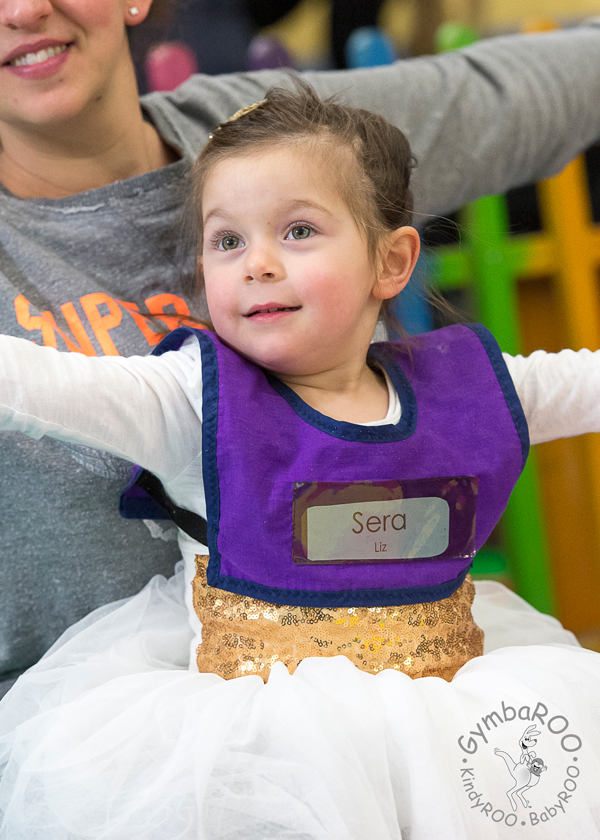
Professor Robert Barton3, an evolutionary anthropologist from Durham University in the UK, explains what is happening in the brain when a child learns a new skill. When a skill is new, the sensory information coming in from the body is actually routed through the cerebellum, or ‘little brain’, which has the important job of determining to which part of the ‘big brain’ – the cortex – information should be sent. Once a new skill has been practiced and learned, the flow of messages changes and goes directly between the relevant part of the cortex and the muscles being activated. The cerebellum is important in the ‘learning and practicing’ stages, but is by-passed once the skill is learned. The brain no longer ‘has to think about’ what sensations are coming in and what actions are the appropriate response.
Learning new skills is a lengthy process. Perhaps the most oft-cited example of practice is that done by a master musician. To become truly accomplished at a musical instrument it takes 10,000 hours of practice! For babies and children, the hours required to learn and master new skills is not quite as onerous, but each new skill they learn takes many hours of practice. Babies learning head control after birth is the perfect example. At birth a baby is only able to lift her head using small upward and backward movements that last for seconds. Slowly, with practice and as other parts of the body adapt to movement against gravity, the head can be lifted and held in position for minutes at a time. Finally, with support of the muscles of the neck and shoulders, and the use of the forearms, the baby is able to lift her head and upper part of the body completely off the ground. This process may take four or five months. It then takes another few months of practice and building up of strength and control for a baby to learn to crawl and cruise the furniture. Every milestone requires opportunity, time, practice, muscle strengthening and encouragement to achieve.
So, when your creeping baby insists on climbing that set of stairs over and over and over (and yes, you have to pluck them from the top every time because they cannot yet climb down the stairs – that’s the next level of skill!), and your toddler insists on running up and down the grassy slope for hours on end, or your three year olds insists on riding that bicycle well into dark, or your four year old skips everywhere, provide lots of encouragement and remind yourself that they are doing exactly what the brain is demanding. Repetition and practice ensure those foundational pathways for learning are well and truly in place!
Dr Jane Williams (PhD, BMgt, RN(Paeds)) is the Research and Education General Manager for GymbaROO and KindyROO. She is one of Australia’s leading experts on baby and child development. More on Dr Jane Williams here.
Bindy Cummings (B.Ed(Human Movement) Hons) has worked as a teacher, child development consultant, early childhood development lecturer, teacher trainer and INPP & iLS consultant. She is the co-creator of GymbaROO’s Active Babies Smart Kids online series, has authored many published articles on child development. She is working on the content and development GymbaROO’s portal and online training programs, and the creation of new online programs for parents and children. More on Bindy Cummings here.
References: 1. Campbell, SK 2006, ‘The child’s development of functional movement’, in SK Campbell, DW Vander Linden & RJ Pausano (eds), Physical Therapy for Children, 3rd edn, Saunders Elsevier, St Louis, pp. 33-76. 2. Goddard-Blythe, S 2011, The genius of natural childhood: secrets of thriving children. Hawthorn Press: Stroud UK. 3. Barton, R. 2014, Cinderella of the brain: The under-appreciated roles of the cerebellum in cognitive evolution, development and pathology. Presentation, INPP conference, Vienna.
GymbaROO Images by Studio Z Photography
GymbaROO-KindyROO
Thousands of parents, babies and children are presently involved in our programs and creating rising stars. GymbaROO-KindyROO kids are excelling academically, emotionally, in leadership roles and on the sporting field. Come join all the fun and learning! “GymbaROO – The best decision I ever made for my child.” Classes from 6 weeks old – 7 years GymbaROO KindyROO
Active Babies Smart Kids – Online Baby Classes
GymbaROO-KindyROO’s online series of baby classes is taking the parenting world by storm! It is highly recommended by doctors, paediatricians, early childhood experts and the Maternal Child and Family Health Nurses Association. This series is being called: “The essential guide for parents”. Join the thousands of parents already playing with their babies from birth, in the best way for brain and body development and laying crucial foundations for future learning. What happens in the first year, not only matters, it matters a lot!
Active Babies Smart Kids online series – Click here.
Try the first class FREE! Click here to watch our Active Babies Smart Kids Episode 1 – Tummy Time
Enjoy the following GymbaROO-KindyROO articles
GymbaROO-KindyROO: Who, what, where, why and how
All about GymbaROO-KindyROO’s online baby classes for parents and babies: Active Babies Smart Kids
How to raise a smarter, happier baby
He May Not ‘Grow Out of It’. A Checklist for Parents of 0 – 5 Year Olds.
What babies really want: Developmentally brilliant gifts for babies.
Why active babies make smart kids.
Screen time babes and kids: The latest important information.
My baby’s got rhythm. Musical activities to share with your baby.
Kids learning ability jumps 2 years with 25 minute GymbaROO movement program 3x a week.
Click here for more GymbaROO-KindyROO article choices

